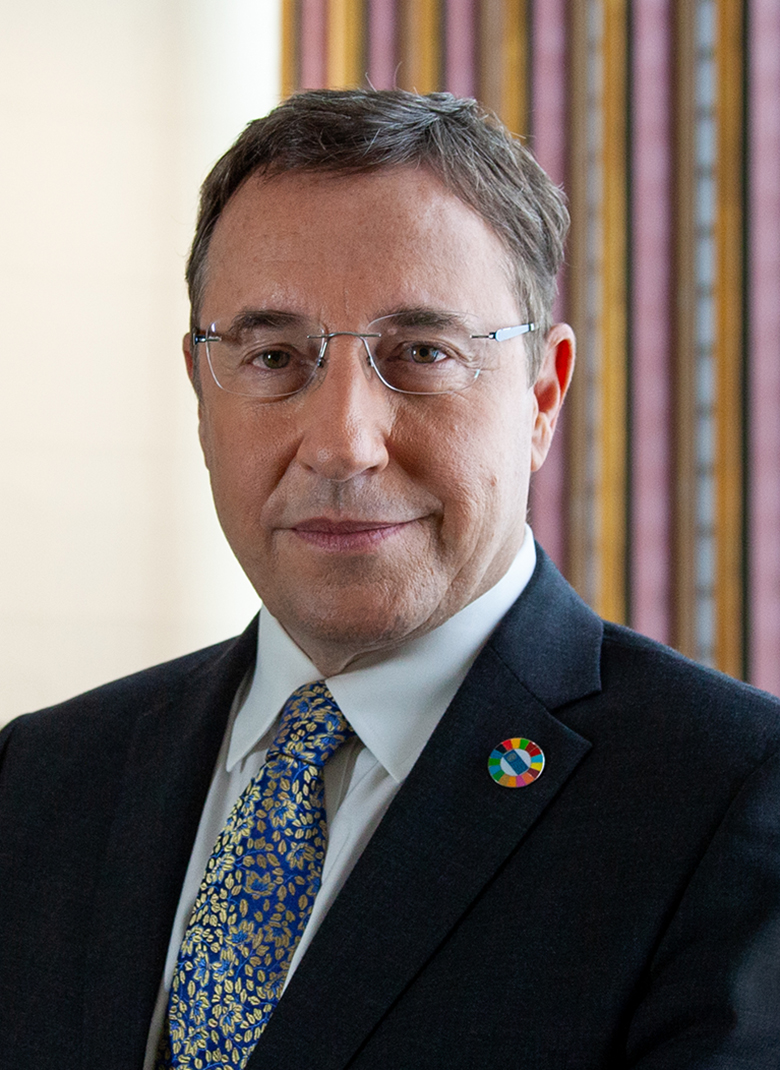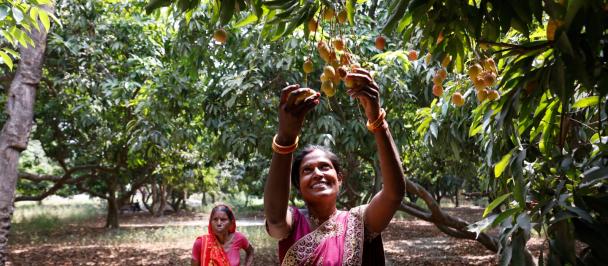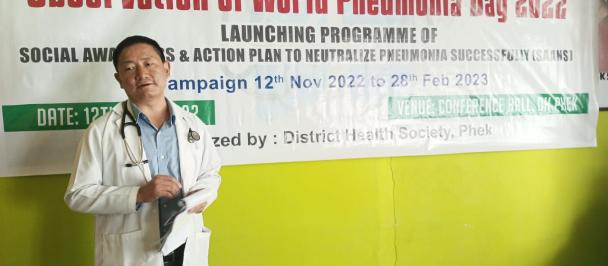Speaking to Srijana Mitra Das, Achim Steiner outlines both challenges — and opportunities — in socioeconomic development.
The world is seeing huge transitions — these will reshape our approach to development: Achim Steiner
March 6, 2023

Synopsis: "There is a great deal of interest in technological horizons now — it’s fair to say that digital will transform virtually every aspect of development. Think of our ability, as seen during the pandemic, to very swiftly use data, identify the most vulnerable people and establish a digital platform for cash transfers as an essential temporary income — there are realms of possibility now which didn’t even exist until a few years ago."
Achim Steiner is Administrator of the United Nations Development Programme (UNDP). Speaking to Srijana Mitra Das, he outlines both challenges — and opportunities — in socioeconomic development:
What is the difference between growth and sustainable development?
Let me start by juxtaposing two ways of looking at development, which are also inextricably linked to UNDP’s own evolution. Growth is essentially an economic metric that measures activity in an economy – so, as long as you grow your economy, you’re supposedly better-off. However, as we know from history, this way of looking at things might be distorted – if an oil tanker off a coast has a major oil spill, ironically, that will actually contribute to a nation’s GDP because the millions spent in cleaning up are counted as economy activity. So, this is one limitation. Secondly, this measure doesn’t capture the distributional aspects of growth – some people can get extremely rich in a country while 90% of the people live close to the poverty line. So, it’s a crude metric but it has established itself as the single most important measure to describe if a country is advancing or not. Over 30 years ago, a number of leading economists, including Amartya Sen, Mahbub ul Haq and others, began to work on the Human Development Report – this was an attempt with UNDP to look at human progress and development through measures other than growth. We needed to look at indicators like human capabilities, freedom, agency, etc., as well as how development is shaped by education, health, income distribution and other enabling factors for people to succeed.
Recently, we’ve added another element, which is the Planetary-Pressures Adjusted Human Development Index – this reflects how you can even grow an economy to a point where it could collapse because of an ecological crisis. The difference between growth and sustainable development is that the latter captures the diminishing of ecological capital or, for instance, the ability to grow food on a piece of land today, tomorrow and thereafter. As human beings, within a few hundred years, we have actually brought the support systems of our planet to crisis point – this is why we must reinvent our economies. By only thinking of growth, you could succeed for some time but you will ultimately fail, whether for ecological reasons or the provocations caused by rising inequality.
We hear a lot about growth across all economies globally – are we hearing enough about ensuring development?
We are hearing of growth because it is still politically the most easily invoked litmus test to describe an economy’s progress. But since 1992, when the concept of sustainable development was first embraced at the Rio Earth Summit, much of what is happening in economies worldwide is increasingly being shaped by the sustainability paradigm. This includes addressing inequality, the energy transition, ecological imperatives, etc. It is fair to say that our financial and economic systems are still built around GDP growth but this is also increasingly being challenged, including by the UN Secretary-General who, for the Summit of the Future in 2024, has made ‘Beyond GDP’ one of the central reform agenda items. I think we are correcting for distortions and we’re on the verge of inventing a new framework within which we will have a less risky and uncertain future by addressing the very factors which can throw us off-course.
Does ‘trickle-down development’ work?
If enough ‘trickling’ happens, people will, to some extent, be better off. Consider globalisation which is often debated – it is a fact that the enormous growth in economic activity in trade has lifted many out of poverty. But, in India, for instance, with the multidimensional poverty index, we have found evidence that a deliberate public policy of reducing poverty can produce extraordinary results. Over 415 million people have been lifted out of multidimensional poverty over the last 15 years. In China too, the development policy always put a premium on eradicating poverty – more than 800 million people have been lifted out of extreme poverty in the last 30 to 40 years.
There are other economies which have perhaps grown faster than India’s over the last three decades – but they have not reduced poverty. They have allowed poverty to grow. So, public policy with a focus on inequality and leaving no one behind is a very significant variable beyond just letting ‘trickle-down’ take care of it – the crumbs that fall off the table in the long run are never enough to address issues of inequality. They often show us how people simply start with very different conditions from which they are able to compete – if, in this digital era, a person cannot afford an internet connection, then it’s pretty theoretical to tell them, ‘Oh, you can now access the knowledge economy as a marketing platform’. If a person can’t afford to even pay for an internet connection, that becomes an exclusionary wall. We are also trying to address these issues in UNDP today when we talk about technology and the digital transformation, their opportunities and possibilities as well as exclusions.
What are some exciting new ideas and innovations in the field of development today?
There is a great deal of interest in technological horizons now — it’s fair to say that digital will transform virtually every aspect of development. Think of our ability, as seen during the pandemic, to very swiftly use data, identify the most vulnerable people and establish a digital platform for cash transfers as an essential temporary income — there are realms of possibility now which didn’t even exist until a few years ago. Consider women’s participation in the financial system. The truth is that for most of the 20th century, many women in developing countries simply did not have the ability to participate therein. Many had no credit record, collateral or even their own legal address. The doors of the banking system were thereby closed to them — but in the digital economy, with smartphones and financial platforms, women can conduct transactions. They can borrow money in the morning, for instance, buy produce at a wholesale market, sell it and repay the loan at marginal cost on a smartphone in the evening. These are revolutions in empowering people to use their entrepreneurial skills.
Another transformation is the decarbonisation of economies — the world spent decades arguing why this was impossible. Yet, here we are in 2023, with the energy revolution underway at full speed. We must now ensure that poorer economies have access to capital and finance to invest in this. In Africa, UNDP is beginning to work on a 21-country minigrid program which could help 265 million people access affordable and clean energy for the very first time.
Alongside though, we are also dealing with growing inequality globally which could erode development. Rising inequality is particularly destabilising the economies of the poor whose ability to withstand shocks like climate events is far lower. This explains the growing number of the poor, the malnourished and conflict-impacted — last year, we had the highest number of refugees since 1945.
Clearly, we are at a point where our approach to development must embrace fundamental transitions. These include shifts in technology alongside changes in how we recognise the vulnerable in society.
What likely impacts will climate change have on developing economies?
Everything in science emphasises the disruption in the planetary system — last year, we saw forest fires, heatwaves, sea level rise and diseases like malaria in places these have never occurred before. These are all signs of climate change translating into our lives — that’s why we’re stressing the urgency of reducing the drivers of global warming. Ours is the first generation living the reality of climate change and adaptation is an ever more urgent priority. The challenge is to accelerate our exit from carbon-intensive industrialisation while expending more funds on protecting what we’ve already built.
What climate adaptations would you recommend for India?
It’s very important to know where the greatest risks are. India has enormously long coastlines with large populations living along these. Events like typhoons and sea level rise are good indicators of where vulnerability is the highest. Next, we must focus on rural areas where the dependency on functioning ecological infrastructure is most likely to expose people (often, the poorest) to shocks like droughts. Importantly, what engineers once saw as a ‘hundred-year-event’ and designed infrastructure accordingly now happens once or twice in five years — the whole reality of disasters and the economics of reconstruction has changed.
Third, India’s cities have a growing concentration of populations with a corresponding ecological footprint. To manage this, there should be increasing efficiency in the designs of buildings, cooling systems, etc. Prime Minister Modi has also emphasised how lifestyle decisions make a difference — concerted action by 1.4 billion Indians can be transformative for green spaces, solar power adoption, etc.
What role can the private sector play in building climate resilience?
In most economies, public budgets will not have sufficient resources to finance an energy transition in the next two decades — no government can fund this simply from tax revenues or public income. We need to make the private sector the accelerator and scaling-up partner in this.
India is a fascinating renewable energy economy to watch – it is one of the fastest countries expanding its renewable energy infrastructure in absolute terms. Several factors have helped, including clear regulatory signals and government programs, making new business models, aggregating how photovoltaic investments could be brought to a size where the private sector had the confidence of earning sufficient returns and so on. India is thus showing the world how much of its expansion of electricity-generating infrastructure in the renewable sector is financed by private investors.
The private sector can achieve this across economies with a regulated environment that creates confidence in the business model and an economic context which corrects for distorting fiscal subsidies to fossil fuels, making these artificially cheaper. When public policy and private sector entrepreneurship, investments and financial markets converge, remarkable things can happen.
Original Article: The Economic Times

 Locations
Locations


